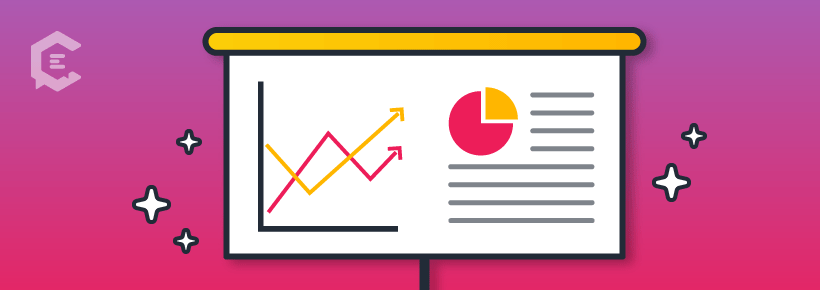In this series, we’re exploring the emerging and shifting world of newsletters. While once considered link-farm engines, today’s modern approach shifts an email into a platform to tell a brand’s compelling and unique message. In our final post, we provide expert-curated tips for maintaining a newsletter strategy that evolves with a brand and attracts potential customers.
Send.
A seemingly insignificant, one-syllable word. That is, until, you shoot out your first newsletter into the world, hoping it illustrates — sans typos — your company or brand’s message. After a few weeks of researching and seven days of creation, you finally took a deep breath and released the email blast. While that moment definitely calls for some champagne to calm your nerves, to maintain an effective content strategy, you’ll need to maintain steam. This makes the process of not only attracting but retaining subscribers the final—and perhaps, most important—step. “It is engaging readers in the long haul that’s the challenge. Always staying not only relevant, but ahead of trends when possible, is the key to lasting, long-term user engagement,” co-founder of GalacticFed, Irina Pauc, says.
After all, the trick of building loyalty is a lot like dating: To have staying power, you have to be different from all of the others. Abbie Byrom, the director of Global Partner Marketing for Samsung’s SmartThings says an average customer might receive up to 100 marketing emails daily. Every piece of content delivered to their inbox must be relevant, captivating and reflective of the brand values that attracted them in the first place. “The minute your content is not useful, or at least entertaining, your customer hits the unsubscribe button, and you’ve lost the opportunity to keep building your relationship with them,” she says.
So how do you maintain your attention to detail and keep your readers stimulated? Industry pros share their best advice:
How to be in for the short and the long play.
Ask any growth strategy guru and they’ll agree newsletters are intended for not only short, instant wins — but long-term goals, too. As Byrom explains, creating, executing and developing a relationship with a user takes time and multiple touch points over the course of their subscription. Collecting email addresses also takes time and energy, and very few companies have an instant, specifically targeted database of emails.
Much like learning to ride a bike or developing any skill, practice results in progress and helps to shift and improve your approach with each and every newsletter you send. “I don’t know of a company that has overnight success with newsletters, especially taking into account that each one sent provides tons of data for analysis, learnings and best practices,” Byrom says.
Once you’ve started to get the hang of it, though, an established newsletter can result in short-term gains. From promotional offerings, product launch announcements to important timely information, the quick wins often come after the long development process. Or, as Pauc puts it: “Once you build that true fanbase of newsletter followers, it serves a good springboard for launching more sophisticated products down the line.”
To arrive at the springboard that moves the numbers, though, you first have to understand how to analyze data.
If you keep shooting off newsletters into the wild, hoping they’ll produce the results you’re working toward, but you never conduct a deep dive into their success — you’re wasting your time. That being said, if you’re new to newsletters, you can focus your critical assessment to the most vital metrics. The most important ones to measure include:
Click-through rate (CTR)
Co-founder of GalacticFed, Zach Boyette, explains among other things, your newsletter is a vehicle with the important job of transporting the user from a place of low intent (their inbox at 8 a.m., while they’re commuting to work) to a place of high intent (your website, widget, app… you name it). Your click-through rate can tell you if you’re doing a killer job at getting them out of their Gmail, Outlook, etc., and to where you want them to be. “A strong CTR is a signal that your message resonates with your audience and contains a clear flow of action,” he shares.
Forward rate (FR)
No matter what business you’re in — selling beauty products, booking travel tours, or promoting your own book — word of mouth is one of the most powerful tools. The same concept translates into the sphere of email marketing.
Boyette says with a regular newsletter cadence, you’ll collect dedicated visitors or users who might even visit your site before they receive your blast. These are the types of folks you want to keep in your corner, since they’ll impact another important metric: your forward rate. As the name suggests, this is how many times someone opens your email, reads it and sends it to a pal. “To grow your email database using newsletters as a standalone channel, you’ll need people to forward your emails to totally new people, thereby increasing your viral coefficient,” he explains.
Conversion rate
Though clicks and forwards are important, Boyette argues the most impactful number to pay attention to is your conversation rate. How come? Ultimately, brands and companies want users or readers to perform a specific action. Whether it’s purchasing a product, recommending a friend, or something else entirely, the conversation rate measures how well you can guide them exactly where you want them.
“If click-through rate and forward rate are increasing, but conversion rate is rapidly decreasing, this is a bad sign: You’re getting more engagement from the wrong people,” he notes. “Conversely, if you’re growing volume, but conversion rate is staying flat or increasing, this is a clear signal that you’re reaching the right audience.”
Unsubscribe rate
While not the most fun news to discover, Byrom recommends not only paying attention to your subscriber rate but the opposite, too. If more and more people are clicking “No, thanks!” on your email, it’s time to implement some changes. While audience turnover is normal, it’s always something to pay attention to when you look at the rate of unsubscribe compared to your overall database. “This could be indicative of multiple challenges: emailing too often and the customer is fatigued; the content is not relevant to those users; or the CTA’s aren’t strong enough to drive action,” she explains.
To improve your numbers, focusing on that CTA can make a big difference. Here’s how to effectively carve out the right subject lines for your brand:
While CTAs and subject lines are highly dependent on your brand voice, goals and approach, generally speaking, some of the same best practices apply. Here, a few to follow as you develop your game plan:
Keep it direct, short and urgent.
There’s a reason a pop of color in a muted outfit is often a recommendation of stylist. Being slightly different, even subtly is a way to demand attention. Byrom explains when you keep your subject line direct, short and urgent, you’ll warrant an open. “If your subject line is not short, sweet, and to the point while remaining on brand tone, you probably aren’t going to get my attention; and if I don’t open that email, you have lost the ability to reach me now and potentially in the future,” she explains.
Make your CTA obvious.
If you have a long list of paragraphs, a graphic here and a collection of social share buttons there—Boyette says your call to action will get lost in the clutter. That’s why he advises negative white space around your CTA to make it obvious. “When you give it more gravity and importance, your customer or user will pay more attention,” he notes.
Create trust.
It might seem like a no-brainer, but one way to improve your subject lines and CTAs is to be honest. As Boyette puts it, your customer should know exactly what they’re getting when they click. “Your user should have no fear that signing up for your service will lock them into a painful commitment. Phrases such as ‘Try Free for a Month,’ ‘Free Shipping & Returns,’ and ‘Try It at Home’ give users more peace of mind when weighing their decision to convert,” he explains.
With these tools, you can begin to carve out the right newsletter strategy that makes sense for your business. But remember, there’s no way to predict how long it will take to reach your benchmarkers. Newsletters are subjective, dependent on industry and evolve with each send. But to ensure you’re on the right path, Pauc says to follow this nugget of wisdom: take your monthly traffic size and assume a 5 to 10 percent conversation of that over to your newsletter list. If you’re moving in that direction — you’re on the right path.
Just keep sending.












